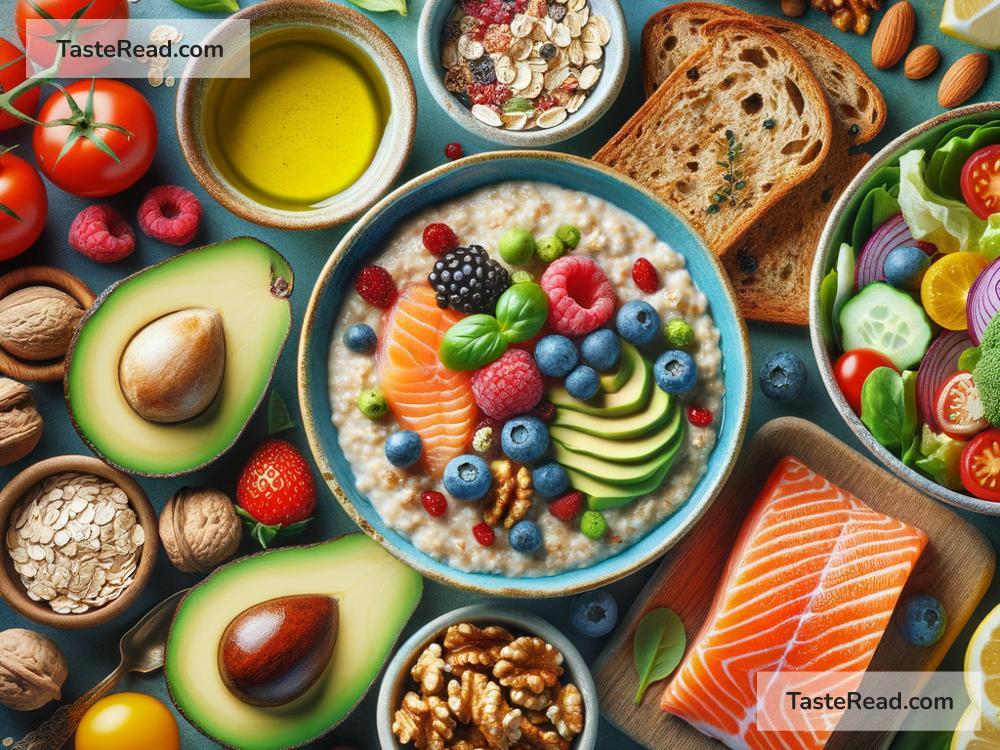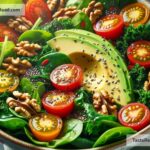Foods for Reducing Triglycerides: A Simple Guide
Triglycerides are a type of fat found in your blood. They come from the food you eat, especially sugary and fatty foods. While your body needs some triglycerides for energy, too much can raise your risk of heart disease, diabetes, and other health problems. If your triglyceride levels are high, you might be wondering how to bring them back down to a healthy range. The good news is that you can make a big difference by adjusting your diet. In this article, we’ll explore foods that can help reduce triglycerides in simple and easy-to-understand terms.
1. Eat More Fatty Fish
Fatty fish, like salmon, mackerel, sardines, and tuna, are rich in omega-3 fatty acids. These are healthy fats that can lower triglycerides and support heart health. Omega-3s work by reducing inflammation in the body and improving how your blood circulates. Experts recommend eating at least two servings of fatty fish per week. If fresh fish isn’t available, canned options are great too—just check for low-sodium varieties.
Example: Grill a salmon fillet with some lemon and herbs for a quick, heart-healthy dinner.
2. Choose Whole Grains
Whole grains, like oats, quinoa, brown rice, and whole wheat bread, are better for your triglycerides than refined carbs such as white bread and sugary snacks. Whole grains retain fiber and nutrients that help slow digestion and prevent spikes in your blood sugar. These slow, steady energy releases make it harder for your body to produce excess triglycerides.
Example: Start your day with a bowl of oatmeal topped with fresh berries and a sprinkle of nuts.
3. Load Up on Vegetables
Vegetables are low in calories and packed with vitamins, minerals, and fiber. They won’t raise your triglycerides, no matter how much you eat! Fiber is especially important because it helps your body process fats more efficiently and keeps your cholesterol levels in check. Leafy greens like spinach and kale, cruciferous veggies like broccoli and cauliflower, and colorful options like bell peppers and carrots are all excellent choices.
Example: Make a big salad with spinach, tomatoes, cucumbers, and a drizzle of olive oil for lunch.
4. Replace Sugary Snacks with Fruits
Refined sugar is one of the main culprits behind high triglycerides. Candy, soda, and baked goods can cause triglyceride levels to skyrocket. Instead, choose natural options like fruits. Fruits contain fiber and vitamins, which make them a better alternative to sugary treats. However, moderation is key, as fruits contain natural sugar. Opt for lower-sugar fruits like berries, apples, and oranges.
Example: Snack on a handful of blueberries instead of reaching for a sugary muffin.
5. Add Healthy Fats, Like Nuts and Seeds
Not all fats are bad! Nuts and seeds, such as almonds, walnuts, flaxseeds, and chia seeds, contain heart-healthy fats that can lower triglycerides. They also have fiber and protein, which keep you full and reduce your cravings for unhealthy snacks. Just be mindful of portion sizes, as nuts are calorie-dense—even a small handful can go a long way.
Example: Sprinkle chia seeds on your yogurt or oatmeal for a boost of healthy fats and nutrients.
6. Use Olive Oil Instead of Other Cooking Oils
Olive oil is a great source of monounsaturated fats, which are healthier than saturated or trans fats found in butter and processed cooking oils. Studies show that using olive oil instead of unhealthy fats can help improve your blood lipid levels, including triglycerides. Try to use olive oil in cooking, dressings, or even dipping sauces.
Example: Use olive oil to sauté vegetables instead of using margarine or butter.
7. Eat Lean Protein
Replacing red meat and processed meats with lean protein sources can also lower triglycerides. Opt for skinless poultry, fish, tofu, eggs, and legumes like beans and lentils. These alternatives are lower in saturated fat and won’t contribute to high triglyceride levels.
Example: Swap a burger for a grilled chicken breast or a lentil soup.
8. Cut Back on Alcohol
Alcohol is high in calories and sugar, which can quickly increase triglyceride levels. Drinking too much alcohol is one of the main contributors to triglyceride spikes. If you’re trying to lower your levels, reducing your alcohol intake—or cutting it out completely—can help.
Example: Reach for sparkling water with a slice of lime instead of beer or wine.
9. Enjoy Avocados
Avocados are a superfood packed with monounsaturated fats, fiber, and other heart-healthy nutrients. These fats can help reduce triglycerides and improve your cholesterol profile. Avocados are versatile and can be added to salads, sandwiches, or smoothies.
Example: Spread mashed avocado on whole-grain toast for a nutritious breakfast.
10. Stay Hydrated with Plenty of Water
While not technically a food, water is vital for overall health—including managing triglycerides. Staying hydrated helps your body function properly and avoids unnecessary sugar-filled drinks like sodas or juices that can spike triglyceride levels.
Example: Carry a reusable water bottle throughout the day to keep drinking water simple and convenient.
Final Thoughts
High triglycerides can be a warning sign for your health, but making smarter food choices can lead to improvement. Focus on eating whole, nutrient-rich foods while cutting back on refined sugars, unhealthy fats, and alcohol. Combine these changes with regular exercise and good sleep, and you’re on your way to healthier triglyceride levels.
Remember, small changes over time can make a big difference. If you’re unsure where to start or have additional questions, consult with a doctor or a nutritionist for personalized advice. Your heart will thank you for the effort!


